1,574 days, 2,408 entries ...
Newsticker, link list, time machine: HOLO.mg/stream logs emerging trajectories in art, science, technology, and culture––every day
November 2022
The 6th edition of the International Digital Art Festival & Biennial (BIAN) opens at Arsenal Contemporary Art Montreal. Co-curated by Alain Thibault and DooEun Choi, the show’s theme of ‘mutation’ is at play in splashy works including Jonathan Schipper’s Slow Motion Car Crash (2009, image) and Bill Vorn’s robot burlesque Copacabana Machine Sex (2018, image upper right). Yunchul Kim, Ying Gao, Rafael Lozano-Hemmer, Lu Yang, and 21 others contribute works.
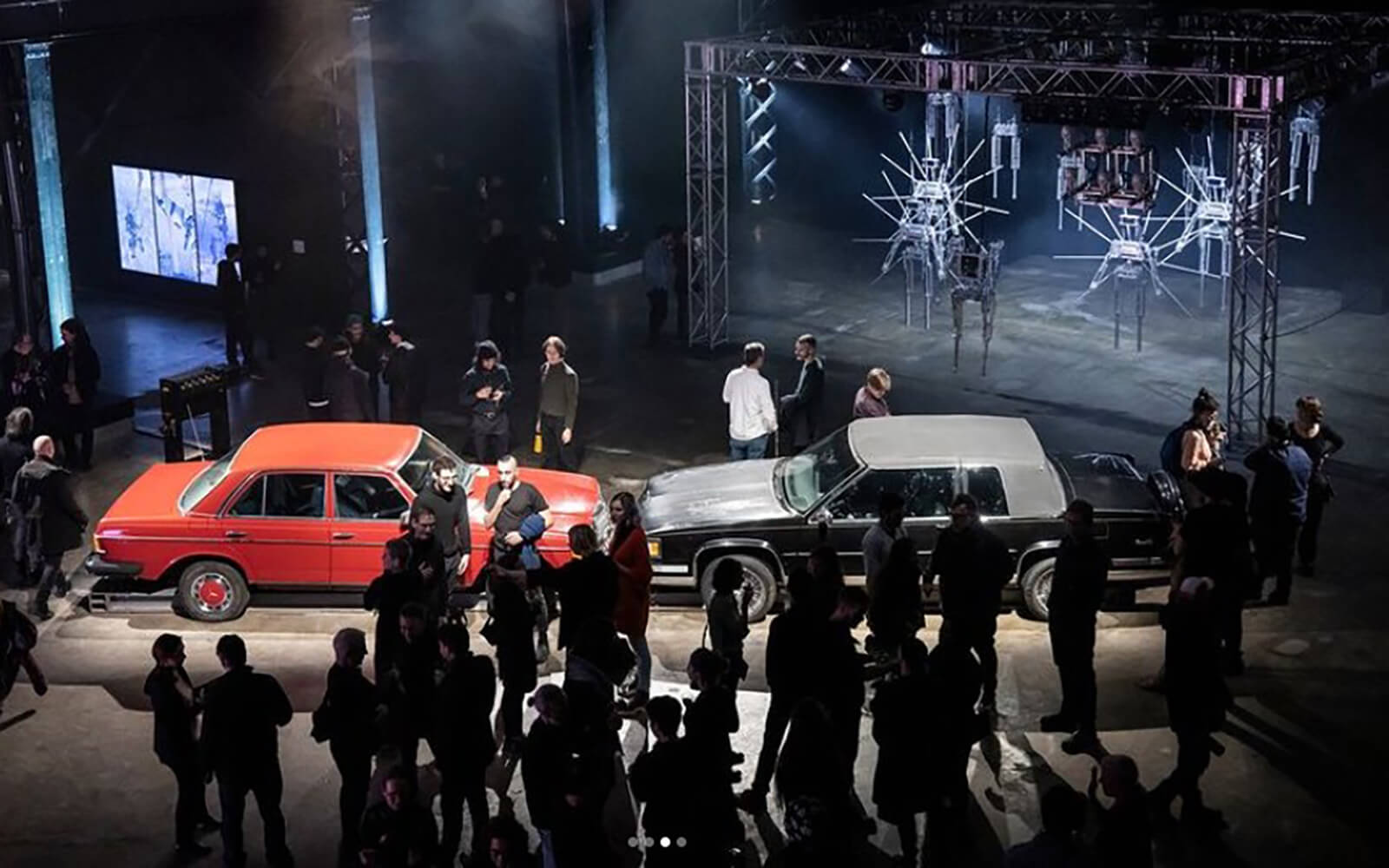
“One thing I like about this approach is that, because it never goes inside the neural net and tries to change anything, but just places a sort of wrapper over the neural net.”
“I’m worried. I could see people signing away contracts right now that could have really detrimental impacts on their future ability to make work as themselves.”
After exploring “Water” as a major exhibition theme in 2019-20, the Queensland Gallery of Modern Art (GOMA) opens “Air,” featuring more than 30 artists including Dora Budor, Nancy Holt, and Katie Paterson that probe the cultural, ecological, and political dimensions of Earth’s atmosphere. “Air” is anchored by Tomás Saraceno’s Drift: A cosmic web of thermodynamic rhythms (2022, image), a new commission that suspends 13 partially mirrored spheres in GOMA’s central atrium.
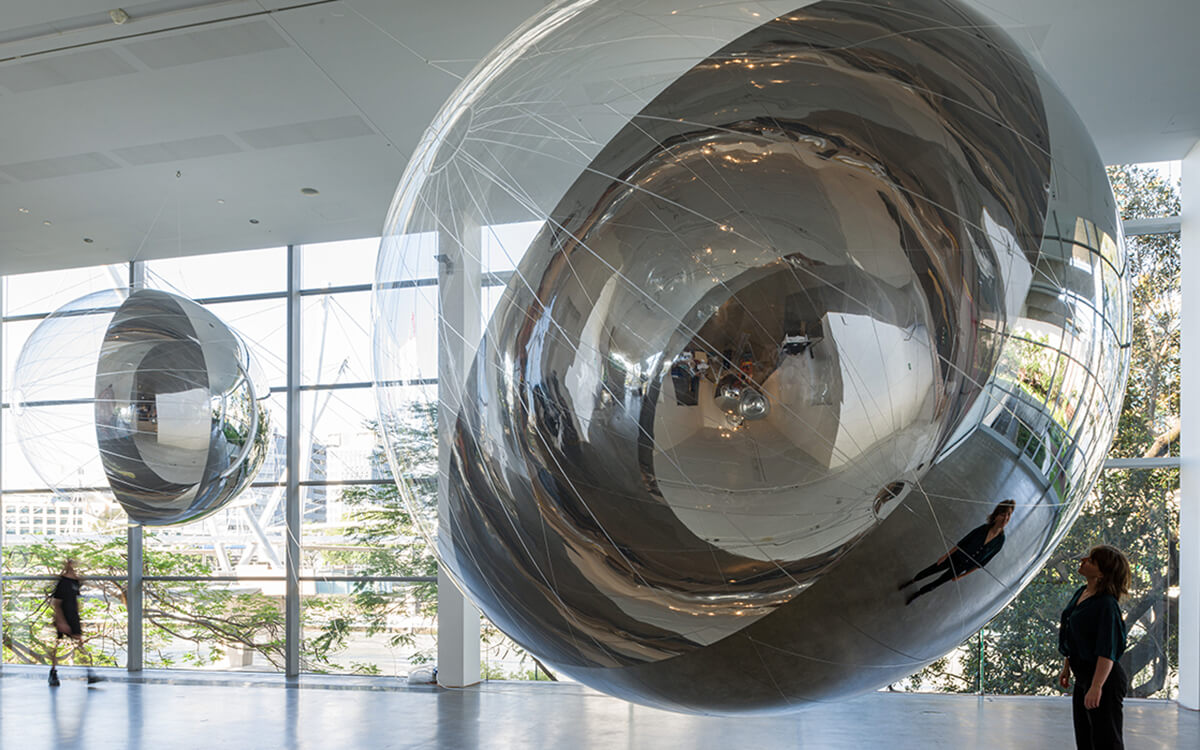
“I needed to train myself to cry in order to continue feeding those tiny marine ecosystems.”
Jonas Lund
By Opening This Book
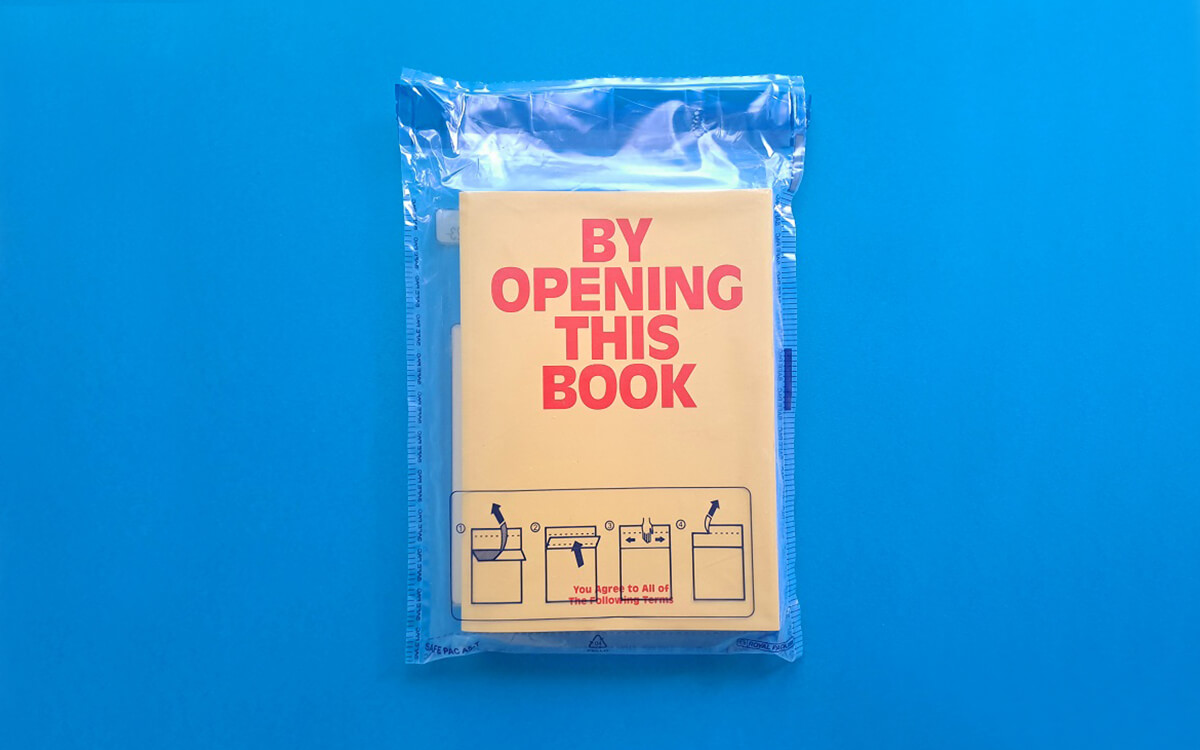
“We can keep suppressing the wages of Uber drivers—keep them below the cost of living—because they can always supplement by renting out their apartment on Airbnb.”
“ON AIR: The Sound of the Material in the Art of the 1950s to 1970s,” an exhibition excavating the pre-history of contemporary sound art, opens at Kaiser Wilhelm Museum in Krefeld, Germany. Assemblies, experiments, and media by Joseph Beuys, Bruce Nauman, David Tudor, and co-presenter Museum Tinguely’s namesake Jean Tinguley, demonstrate how “sounds, tones, noises, signals, and voices became ‘substantial’ sculptural material” in the second half of the 20th century.
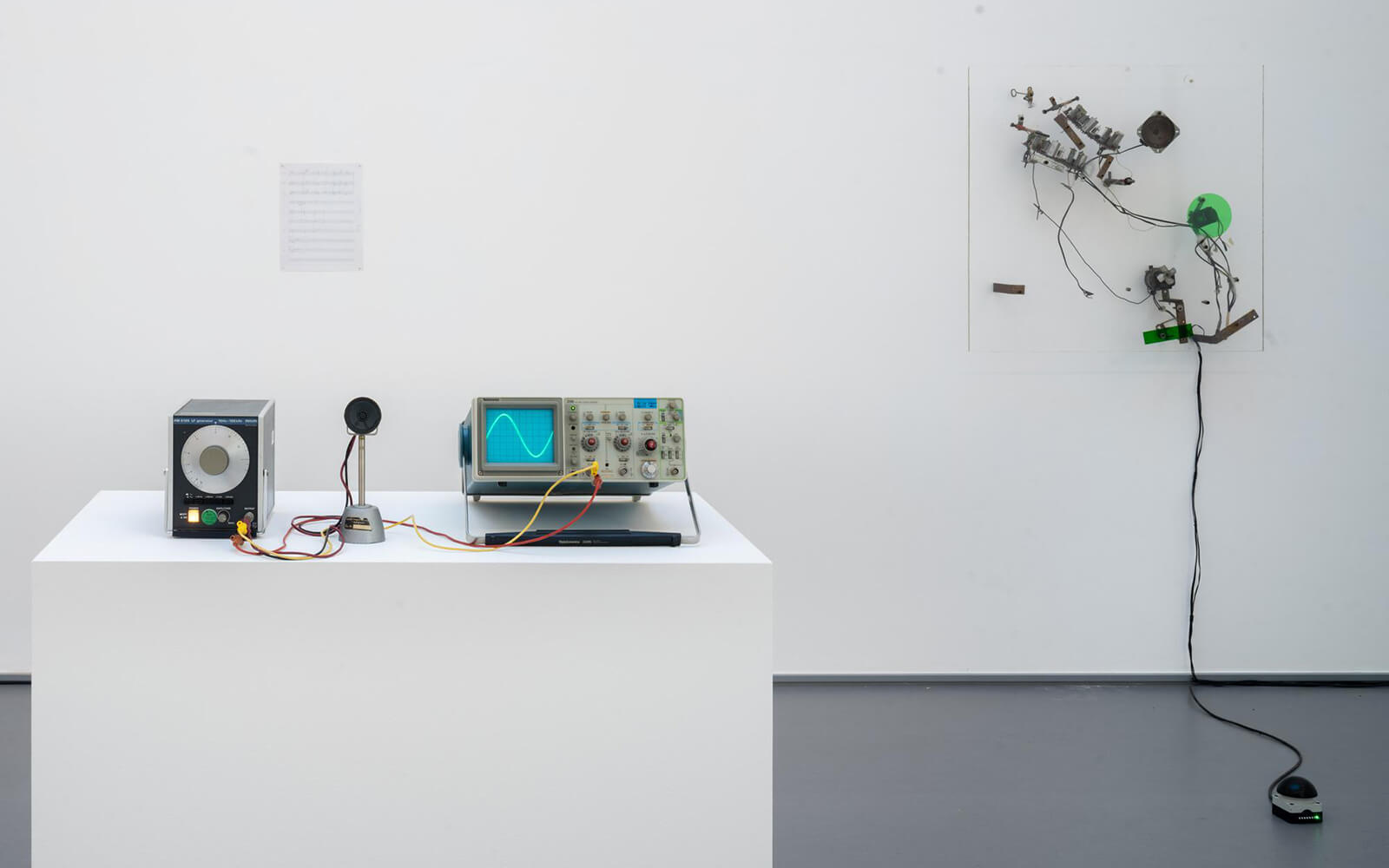
“She represents us—an idealized us—with all of our body dysmorphia and best and worst qualities, warts and all. That’s who we are as consumerists, which is filled with those contradictions.”
A project of Wm (Bill) Perry, “LOST & FOUND Telidon art of the early ’80s,” opens at Toronto’s Cameron House. Presenting limited edition prints of videotex art made on Telidon (1978-85, Canada’s precursor to the world wide web), Perry resurfaces both an overlooked early digital art movement—predating net.art by a decade—and the burgeoning creative networks that founded Canada’s first media and electronic art-focused artist run centres (image: Robin Collyer Cameraman, 1981).
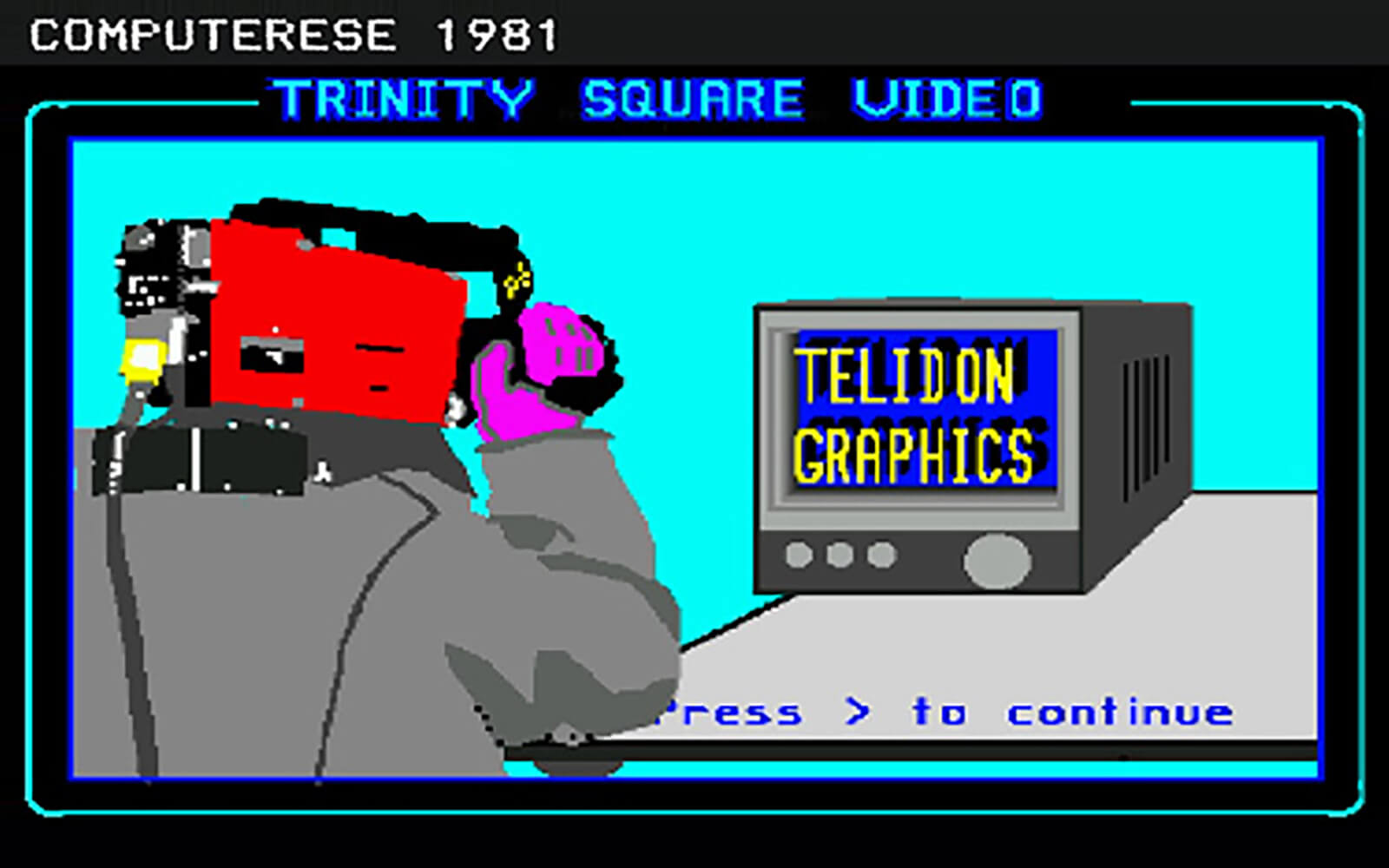
“The sole hallucination I had experienced on my journey to the rumored brink of insanity was one manufactured in the brains of other people: a collective fantasy that a room could be made hazardously quiet.”
“It’s in our DNA to acquire paintings when the paint is still drying—acquire contemporary art when it is contemporary. That continues here: we’re exploring what work a museum can do in the blockchain space right now.”
Sarah Tuck
Drone Vision: Warfare, Surveillance, Protest
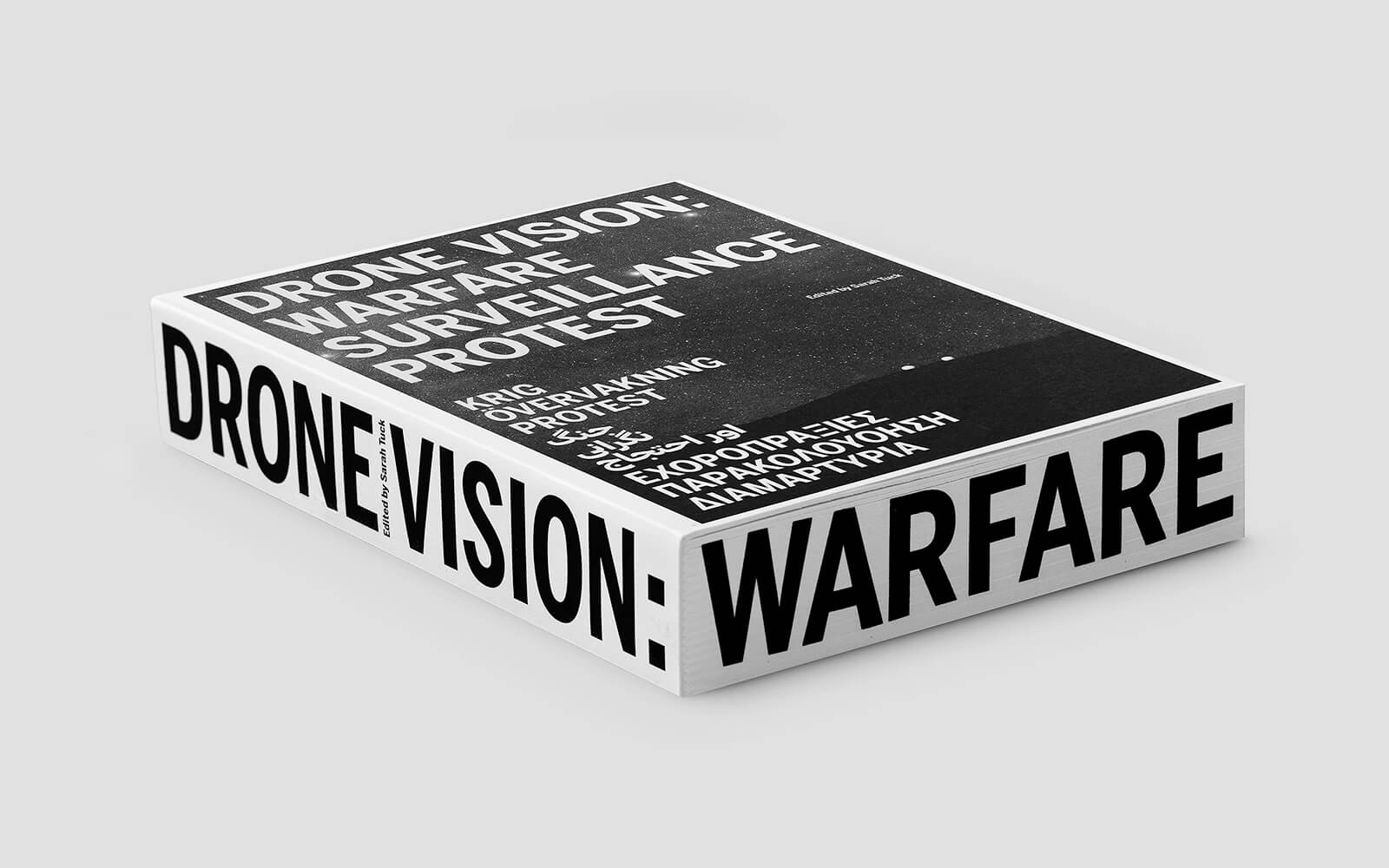
“The problem is that, unlike the moon or Mars, we have no idea how to get there—and that’s a challenge that engineering fixes cannot solve.”
American software artist Everest Pipkin releases The Barnacle Goose Experiment, an “abiogenesis body horror idle clicker” where you play as researcher Dr. Evergreen G. Branca locked in a biodome and tasked with generating a working world with objects, music, and living things out of her own body. The browser game is inspired by the medieval barnacle goose myth that had people, then unaware of bird migration patterns, believe that geese emerge fully-formed from barnacles.
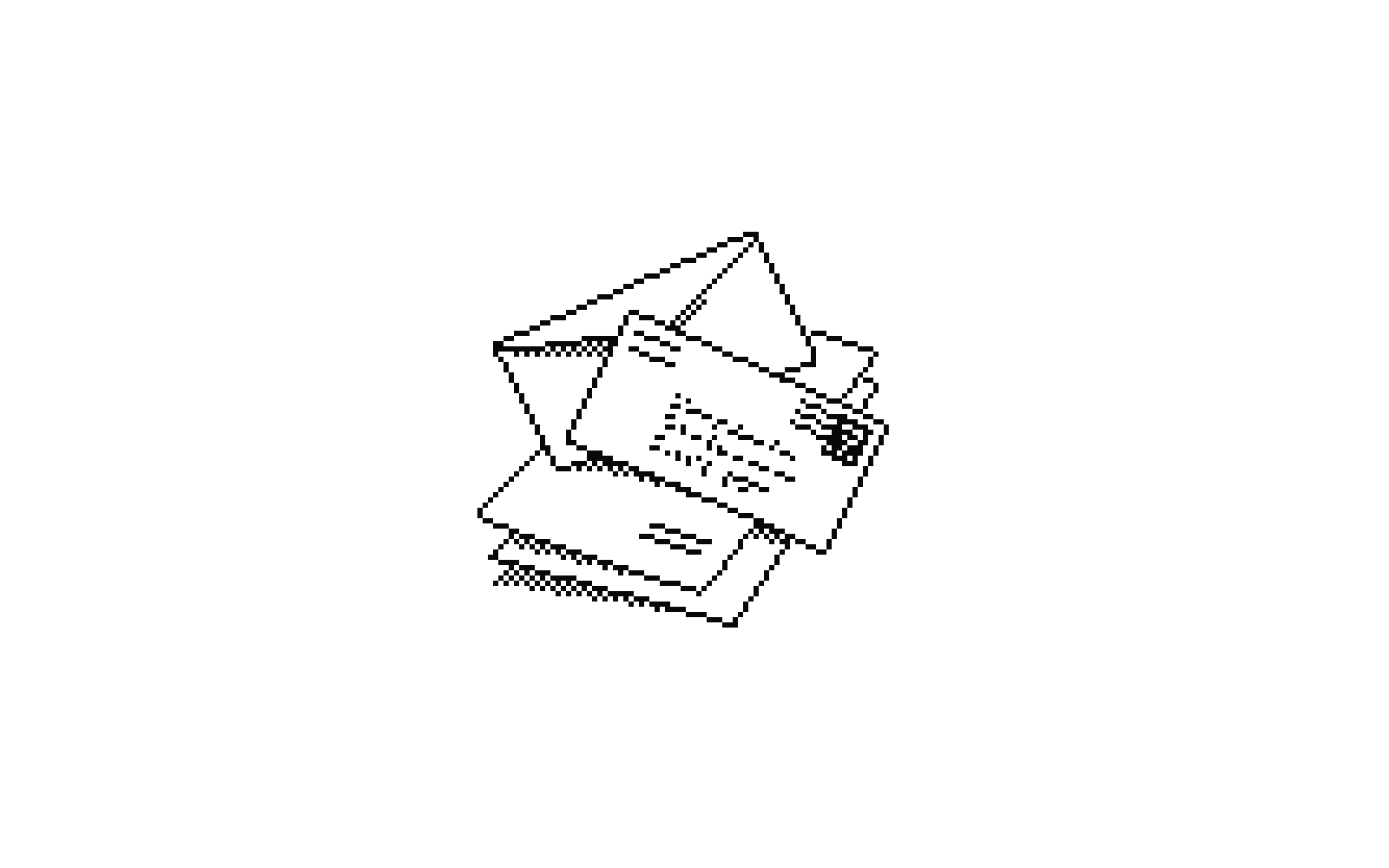
“A premature extinction event occurs before we’ve flooded the universe with ‘value.’ We, then, shouldn’t spend money on global poverty: those resources should instead go to ensuring that we realize our ‘longterm potential.’”
“Unsupervised,” a solo show by artist Refik Anadol opens at New York’s MoMA. Working with the metadata for the museum’s 130,000 artworks, the Turkish-American artist’s eponymous AI model (image) fluidly morphs through the latent aesthetic space of the collection. Viewers revel in flowing transitions between myriad possible artworks, the experience subtly intensified by camera, microphone, and local climate data-informed real-time interactivity, tweets Anadol.
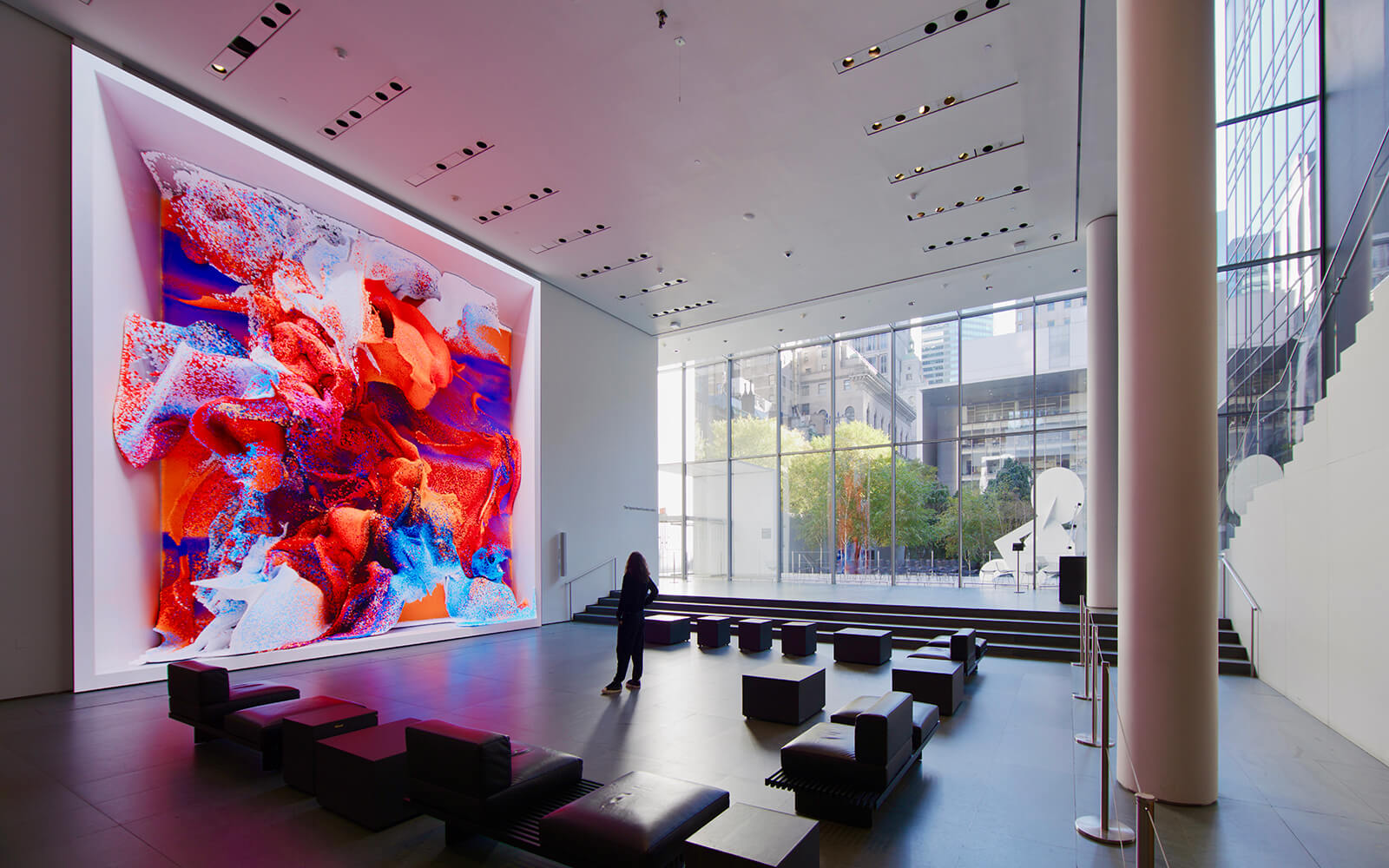
“Paid in attention, the critic becomes captured by their audience and prioritizes subject matter that maximizes attention, retains or pleases an existing audience, and does not jeopardize their reputation.”
Daily discoveries at the nexus of art, science, technology, and culture: Get full access by becoming a HOLO Reader!
- Perspective: research, long-form analysis, and critical commentary
- Encounters: in-depth artist profiles and studio visits of pioneers and key innovators
- Stream: a timeline and news archive with 1,200+ entries and counting
- Edition: HOLO’s annual collector’s edition that captures the calendar year in print
